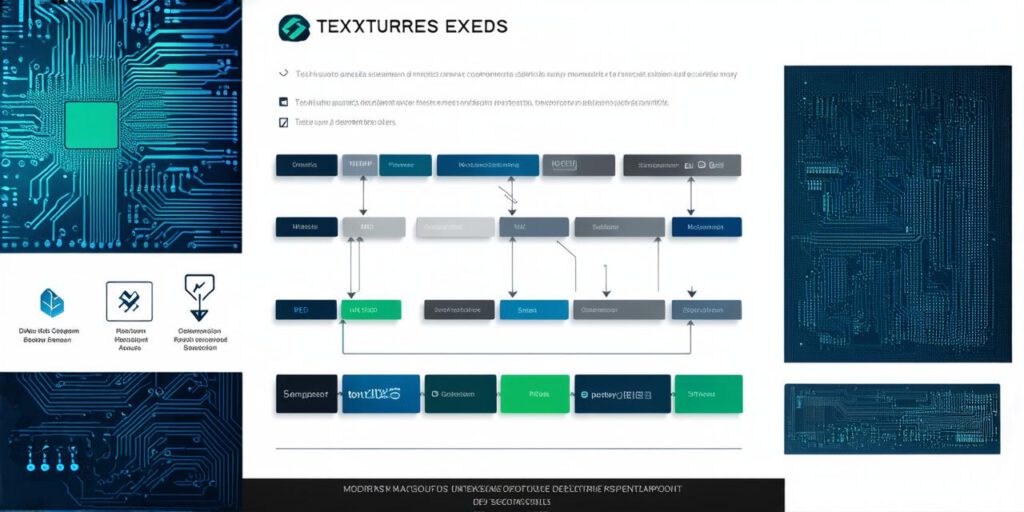Choosing the Right Software Development Methodology
When it comes to software development methodologies, there are several popular approaches that can help businesses manage their projects more efficiently and effectively. In this article, we will explore some of the most common methodologies and provide insights into their strengths and weaknesses.
The Agile Methodology
Agile is a widely used methodology that emphasizes flexibility, collaboration, and continuous improvement. It was initially developed for software development but has since been applied to other fields such as project management and product development. Agile methodology breaks down complex projects into smaller, more manageable tasks called sprints.
One of the significant advantages of agile methodology is its flexibility. Teams can quickly adapt to changes in project requirements or priorities, making it ideal for projects with constantly evolving needs. Agile also encourages collaboration, enabling teams to work together more effectively and efficiently. Continuous improvement is another key feature of agile methodology, allowing teams to learn from their experiences and improve their processes over time.
However, agile methodology can be challenging for some teams, particularly those that are new to the approach. It requires a high level of communication and organization, which can be difficult to achieve in larger or more complex projects. Additionally, agile methodology may not be suitable for companies that require strict adherence to specific project requirements or timelines.
The Waterfall Methodology
Waterfall is a traditional software development methodology that follows a linear approach. It involves breaking down the project into several distinct stages, each of which must be completed before moving on to the next one. This methodology was popular in the 1970s and 1980s but has since been largely replaced by agile methodologies.
One of the significant advantages of waterfall methodology is its simplicity. It provides a clear, defined roadmap for the project, making it easier to manage and track progress. Waterfall methodology also allows for more structured testing and quality assurance processes, which can help ensure that the final product meets the required specifications.
However, waterfall methodology has several limitations. It is inflexible, making it difficult to accommodate changes in project requirements or priorities. The linear approach of waterfall methodology can also lead to delays, as each stage must be completed before moving on to the next one. Additionally, the lack of flexibility can make it challenging to adapt to new technologies or tools that become available during the development process.
The Scrum Methodology
Scrum is a popular agile framework that emphasizes teamwork, collaboration, and continuous improvement. It was developed in the 1990s by Ken Schwaber and Jeff Sutherland and has since become widely used in software development.
One of the significant advantages of scrum methodology is its flexibility. Teams can quickly adapt to changes in project requirements or priorities, making it ideal for projects with constantly evolving needs. Scrum also encourages collaboration, enabling teams to work together more effectively and efficiently. Continuous improvement is another key feature of scrum methodology, allowing teams to learn from their experiences and improve their processes over time.
However, scrum methodology can be challenging for some teams, particularly those that are new to the approach. It requires a high level of communication and organization, which can be difficult to achieve in larger or more complex projects. Additionally, scrum methodology may not be suitable for companies that require strict adherence to specific project requirements or timelines.
The Lean Methodology
Lean is a process improvement methodology that focuses on eliminating waste and improving efficiency. It was initially developed for manufacturing but has since been applied to software development and other fields.
One of the significant advantages of lean methodology is its focus on efficiency. By eliminating waste and improving processes, teams can complete projects faster and more efficiently, leading to cost savings and improved quality. Lean methodology also encourages continuous improvement, allowing teams to learn from their experiences and improve their processes over time.
However, lean methodology can be challenging for some teams, particularly those that are new to the approach. It requires a high level of analysis and continuous improvement, which can be difficult to achieve in smaller or less complex projects. Additionally, lean methodology may not be suitable for companies that require strict adherence to specific project requirements or timelines.
Case Studies
To better understand which software development methodology is right for your company, let’s examine some real-life examples of companies that have successfully implemented different methodologies.
1. Agile Methodology: Spotify
Spotify, the popular music streaming service, has successfully implemented agile methodology in its software development processes. The company uses a unique agile approach called “Spotify Model,” which involves breaking down complex projects into small tasks and working in cross-functional teams. This approach allows Spotify to quickly adapt to changes in project requirements or priorities while maintaining high levels of quality and efficiency.
2. Waterfall Methodology: NASA’s Mars Rover Project
NASA’s Mars Rover project is a prime example of the waterfall methodology in action. The project involved developing a rover that could land on Mars, navigate the surface, and collect data. The project was broken down into several distinct stages, with each stage involving extensive testing and quality assurance processes to ensure that the final product met the required specifications.
3. Scrum Methodology: Zappos
Zappos, the popular online shoe retailer, has successfully implemented scrum methodology in its software development processes. The company uses a unique approach called “Holacracy,” which involves breaking down complex projects into smaller tasks and working in self-organizing teams. This approach allows Zappos to maintain high levels of collaboration and flexibility while continuously improving its processes over time.
4. Lean Methodology: Toyota
Toyota, the world’s largest automaker, is a prime example of the lean methodology in action. The company has implemented a continuous improvement process called “Toyota Production System,” which involves analyzing and improving every aspect of its manufacturing processes. This approach has led to significant improvements in efficiency and quality, making Toyota one of the most successful companies in the world.
FAQs
Q: Which software development methodology is right for my company?
A: The best software development methodology for your company will depend on a variety of factors, including project requirements, team size, and organizational culture. It’s important to carefully consider these factors before selecting a methodology to ensure that it’s the right fit for your company.
Q: What are the advantages of agile methodologies?
A: Agile methodologies, such as Scrum and Kanban, offer several advantages, including flexibility, collaboration, and continuous improvement. These methodologies allow teams to quickly adapt to changes in project requirements or priorities while maintaining high levels of quality and efficiency.
Q: What are the disadvantages of waterfall methodologies?
A: Waterfall methodologies, such as the Waterfall model, can be inflexible and slow to adapt to changes in project requirements or priorities. They also tend to involve extensive testing and quality assurance processes, which can lead to longer development times and higher costs.
Q: What are the advantages of lean methodologies?
A: Lean methodologies, such as the Toyota Production System, offer several advantages, including efficiency and continuous improvement. These methodologies focus on eliminating waste and improving processes, leading to faster and more cost-effective project completion.


